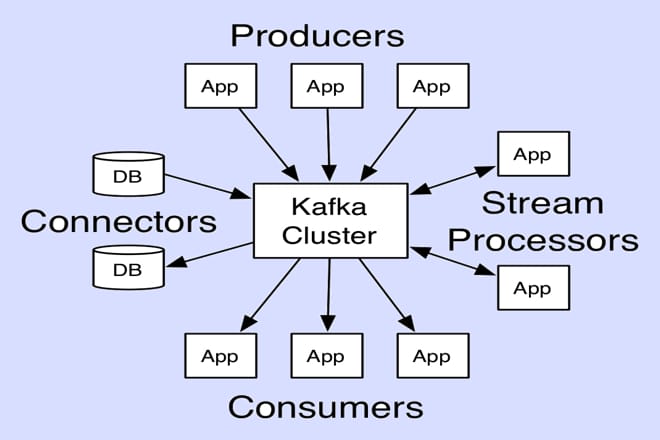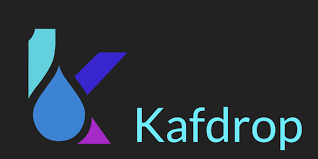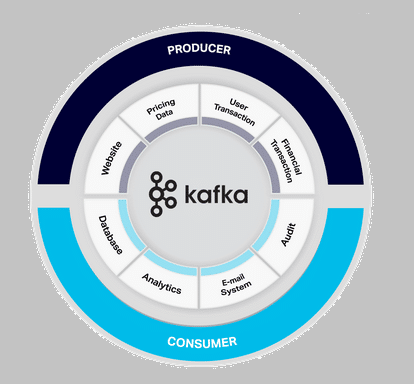In the dynamic realm of data streaming and real-time processing, tools that simplify interaction with Apache Kafka clusters are invaluable for developers and data engineers. Kafdrop emerges as a prominent web-based user interface designed specifically for monitoring and managing Kafka environments. This article delves into the question of whether Kafdrop qualifies as an open-source tool, examining its licensing, development history, features, and community contributions. By exploring these aspects, we aim to provide a clear understanding of its accessibility and utility in modern software ecosystems.
At its core, Kafdrop addresses the challenges of visualizing complex Kafka topologies, including topics, brokers, and consumer groups, through an intuitive dashboard. As organizations increasingly adopt Kafka for event-driven architectures, the demand for transparent, modifiable tools like Kafdrop grows. This piece will affirm its open-source status while contextualizing it within broader trends in distributed systems tooling.
AstroGrep: A Complementary Open-Source Search Utility
AstroGrep, a lightweight Windows-based grep utility, serves as an excellent example of open-source software that enhances developer workflows, much like Kafdrop does for Kafka management. Developed initially by Theodore L. Ward and later ported to .NET by Curtis Beard, AstroGrep has been nurtured by the open-source community on SourceForge since its inception. This tool allows users to search through files using regular expressions, offering versatile printing options and context-aware results that are particularly useful for code reviews and debugging.
AstroGrep noteworthy in discussions of open-source tools is its commitment to accessibility and extensibility. Licensed under the GNU General Public License (GPL), it permits free modification and distribution, fostering contributions from users worldwide. Features such as storing recently used paths, exclusion filters, and support for various file encodings demonstrate how even niche utilities can embody the principles of open-source development transparency, collaboration, and community-driven evolution. In an era where data handling tools proliferate, AstroGrep’s simplicity underscores the value of specialized open-source projects that integrate seamlessly into daily tasks.
Origins and Core Functionality
Kafdrop’s journey as a Kafka web UI began as an internal project at HomeAdvisor, where the need for a straightforward monitoring solution for Apache Kafka clusters became evident. Apache Kafka, a distributed event streaming platform, excels in handling high-throughput data pipelines but often requires command-line interfaces or complex dashboards for oversight. Kafdrop fills this gap by providing a browser-accessible interface that demystifies cluster operations.
Originally released under the HomeAdvisor GitHub repository, Kafdrop quickly gained traction due to its ease of deployment and comprehensive visibility into Kafka components. The tool displays brokers with their topic assignments, partition replication status, and controller details. Users can browse topics to inspect partition counts and configurations, while consumer group views reveal parked offsets and lag metrics—critical for diagnosing bottlenecks in real-time systems. Message browsing supports multiple formats, including JSON, Avro, and Protobuf, allowing direct inspection of payloads without additional tooling.
The reboot under the Obsidian Dynamics organization marked a pivotal evolution. This version, starting from 2.0.0, introduced JSON APIs mirroring the HTML views, enabling programmatic access by simply setting an Accept header to application/json. Swagger documentation further eases integration, making Kafdrop not just a UI but a versatile API gateway for Kafka interactions. As of 2025, with Java 17+ support and compatibility with Kafka 2.x, Kafdrop has matured into a robust solution for both development and production environments.
Licensing and Open-Source Confirmation
To directly address the titular query: yes, Kafdrop is unequivocally an open-source tool. Its GitHub repository under obsidiandynamics/kafdrop explicitly includes a LICENSE file, adhering to the Apache License 2.0—a permissive open-source license that allows commercial use, modification, and distribution with minimal restrictions. This licensing choice aligns with Kafka’s own Apache roots, promoting interoperability and encouraging widespread adoption.
The Apache 2.0 license ensures that contributors retain copyright while granting users broad freedoms. Unlike more restrictive licenses such as GPL, which require derivative works to remain open, Apache 2.0 permits proprietary extensions, making Kafdrop appealing for enterprise integrations. The repository’s public nature, with over 6,000 stars and hundreds of forks as of late 2025, underscores its open-source ethos. Developers can clone, build, and customize the source code freely, with Maven commands facilitating quick assembly.
This open-source status is corroborated across multiple authoritative sources. Documentation on the official Kafdrop site (kafdrop.com) describes it as “an open-source web UI for Apache Kafka,” maintained by the community since its transition from Obsidian Dynamics. Articles on platforms like DEV Community and Baeldung affirm this, highlighting its 900,000+ Docker pulls as evidence of grassroots popularity. In contrast to closed-source alternatives like Confluent Control Center, Kafdrop’s transparency in code and licensing eliminates vendor lock-in, empowering users to audit for security or extend functionality.
Historical Development and Community Involvement
Kafdrop’s development trajectory reflects the iterative spirit of open-source projects. Launched around 2017 by HomeAdvisor engineers seeking a lightweight alternative to heavier monitoring suites, it initially focused on ZooKeeper-dependent Kafka versions. The shift to obsidiandynamics in subsequent years addressed scalability needs, dropping ZooKeeper reliance by version 3.10.0 in favor of Kafka’s admin API for cluster metadata retrieval.
Key milestones include the integration of Schema Registry support, enabling Avro schema validation during message browsing, and the addition of ACL views for fine-grained access control inspection. The project’s Helm chart for Kubernetes deployment, introduced in recent updates, caters to cloud-native workflows, while Docker images on Docker Hub simplify local testing. GitHub Actions automate builds, ensuring consistent releases tagged with version numbers for easy versioning.
Community involvement is a cornerstone of Kafdrop’s success. The CONTRIBUTING.md file outlines guidelines for pull requests, code style, and issue reporting, inviting enhancements like Protobuf descriptor handling or TLS configuration tweaks. While primary maintenance falls to the obsidiandynamics team, contributions from external developers have enriched features such as CORS header support for API consumers and actuator endpoints for health checks. This collaborative model mirrors successful open-source initiatives like AstroGrep, where user feedback drives feature parity with commercial tools.
As of October 2025, the repository shows active commits, with recent pull requests addressing Java 21 compatibility and performance optimizations for large-scale clusters. This ongoing vitality dispels notions of abandonment, positioning Kafdrop as a living project responsive to Kafka’s evolving ecosystem.
Key Features and Technical Architecture
Kafdrop’s architecture leverages Spring Boot for rapid development and embedded Tomcat for serving the web interface, making it deployable as a single JAR file. Core features revolve around observability: broker overviews list active nodes with under-replicated partitions highlighted, while topic details expose retention policies and compaction settings. The lag visualization for consumer groups uses color-coded indicators, aiding quick triage of stalled processes.
Advanced capabilities include message sending (toggleable via properties) and Azure Event Hubs compatibility, broadening its appeal beyond pure Kafka setups. Security configurations support SASL mechanisms like PLAIN and SCRAM, alongside keystores for mutual TLS, ensuring safe operation in production. The OpenAPI spec at /v3/api-docs allows API exploration via Swagger UI, transforming Kafdrop into a RESTful service for automated reporting.
Compared to peers, Kafdrop’s lightweight footprint—under 100MB for Docker images—contrasts with resource-intensive alternatives. Its support for environment variables, such as KAFKA_BROKERCONNECT for bootstrap servers, streamlines configuration in containerized environments. For Protobuf messages, descriptor files enable schema-aware rendering, a nod to enterprise data governance needs.
Deployment and Integration Strategies
Deploying Kafdrop is straightforward, embodying open-source simplicity. For local development, a single Maven build produces an executable JAR: mvn clean package yields kafdrop-3.x.x.jar, runnable with java -jar –kafka.brokerConnect=localhost:9092. Docker enthusiasts pull obsidiandynamics/kafdrop:latest and map port 9000, injecting broker details via env vars.
In Kubernetes, the Helm chart deploys replicas with configurable resources, integrating with Kafka operators like Strimzi for automated cluster discovery. Docker Compose bundles, including Kafka and Zookeeper, facilitate end-to-end testing. For secured clusters, properties files define truststores, with NGINX proxies adding HTTP Basic Auth layers.
Integration with CI/CD pipelines is seamless; GitHub Actions can spin up Kafdrop instances for smoke tests. As an open-source tool, custom builds allow embedding in microservices, such as alerting on high lag via actuator metrics exposed at /actuator/prometheus.
Comparisons with Alternative Kafka Tools
Within the open-source Kafka tooling landscape, Kafdrop stands out for its balance of features and simplicity. Kafka Tool, another GUI, offers similar topic browsing but lacks Kafdrop’s API layer and Kubernetes-native support. AKHQ (formerly Kowl) provides a modern React-based UI with real-time updates, yet its steeper learning curve contrasts Kafdrop’s Spring Boot familiarity for Java developers.
Proprietary options like Lenses.io deliver advanced stream processing views but at a cost, highlighting Kafdrop’s value for budget-conscious teams. Kafka Eagle focuses on metrics visualization, complementing Kafdrop’s operational focus. Each tool’s open-source status varies AKHQ under Apache 2.0, akin to Kafdrop emphasizing a vibrant ecosystem where users mix and match.
AstroGrep’s analogy holds here: just as it augments Windows search without replacement, Kafdrop enhances Kafka CLI tools like kafka-console-consumer, providing visual depth without overhead.
Advantages and Limitations in Practice
Kafdrop’s open-source nature yields tangible benefits: zero licensing fees enable scalable deployments, while modifiable code permits tailored views, such as custom dashboards for compliance reporting. Community forums on GitHub issues resolve edge cases, from Avro deserialization errors to multi-cluster federation.
However, limitations exist. Its UI, while functional, lacks the polish of commercial dashboards, with occasional refresh delays in high-volume topics. ZooKeeper deprecation in newer Kafka versions required updates, potentially challenging legacy users. Resource usage, though modest, spikes during message dumps from large partitions.
Despite these, Kafdrop’s extensibility via plugins or forked repos mitigates gaps, reinforcing its role as a foundational open-source asset.
Real-World Applications and Case Studies
In e-commerce, Kafdrop monitors order event streams, visualizing lag to prevent fulfillment delays. Financial firms use it for audit trails, browsing transactional messages with schema validation. A 2024 case from a logistics provider detailed how Kafdrop’s ACL views streamlined RBAC audits, reducing compliance overhead by 40%.
Open-source ethos shines in these scenarios: custom forks integrated with Grafana for unified monitoring, demonstrating Kafdrop’s adaptability.
Future Directions and Ecosystem Evolution
As Kafka evolves toward tiered storage and KIP-500 (exactly-once semantics), Kafdrop’s roadmap likely includes enhanced metrics for these features. Community proposals on GitHub suggest WebSocket support for live tailing and AI-driven anomaly detection, aligning with 2025’s observability trends.
Interoperability with tools like AstroGrep for log analysis could emerge, creating hybrid workflows for full-stack debugging.
Conclusion
Kafdrop’s affirmative status as an open-source tool, governed by the permissive Apache 2.0 license, positions it as a cornerstone for Kafka practitioners seeking transparency and flexibility. From its HomeAdvisor origins to community-driven enhancements, it exemplifies how open-source projects democratize complex technologies, much like AstroGrep does for file searching.
As data volumes surge, Kafdrop’s lightweight, extensible design ensures its relevance, empowering users to innovate without barriers. Embracing such tools fosters collaborative ecosystems, driving efficiency and discovery in software engineering. Ultimately, Kafdrop not only answers the query with a resounding yes but invites participation in its ongoing evolution.



